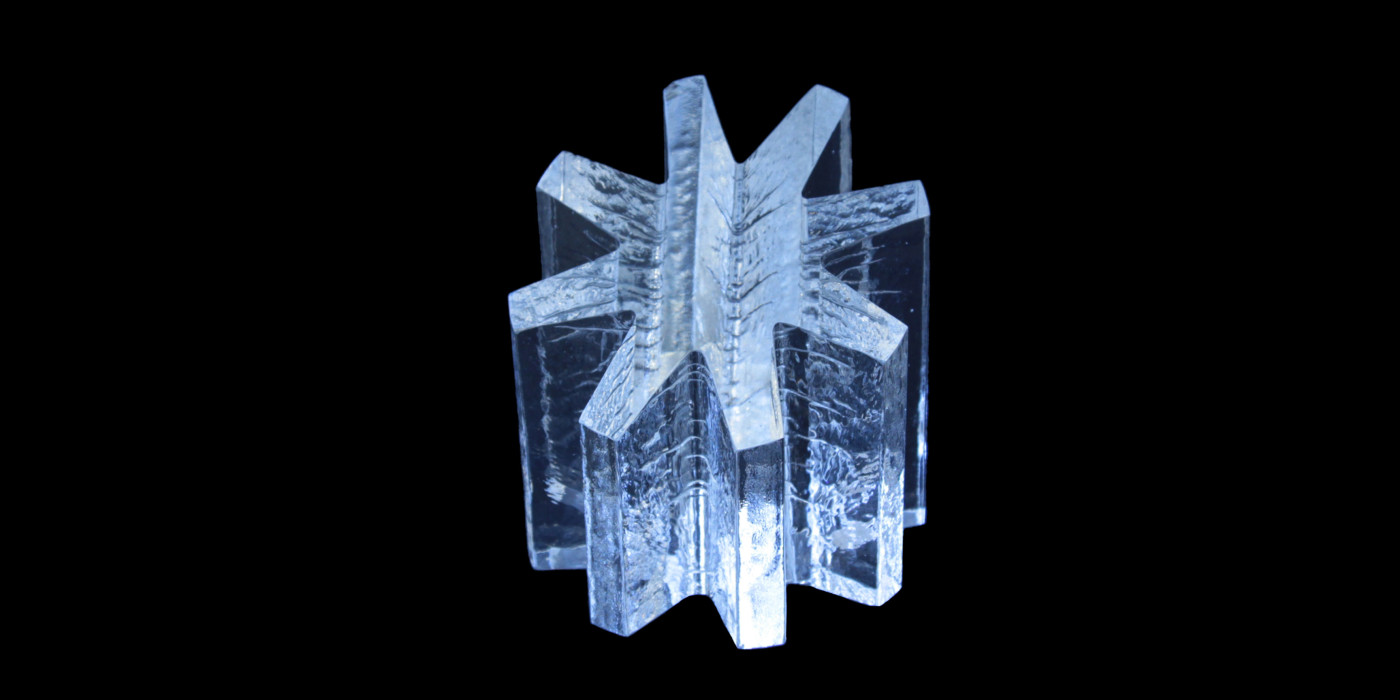The Asterisk Trophy

Designing the Trophy
The National Design Awards trophy was originally designed in a twisted asterisk form by William Drenttel and Jessica Helfand in 2000. The trophy is the physical embodiment of the National Design Awards celebration of innovation and excellence in American design. For the first decade, the trophies were produced by Saint-Gobain Advanced Ceramics, a world leader in the habitat and construction markets. In 2010, Smart Design, that year’s winner in Product Design, recreated the original trophy in a new stainless-steel composite material. In 2011, The Corning Museum of Glass worked with a team from Cooper Hewitt to design a new trophy in glass and continues to produce the trophies today.
Created as part of the Corning Museum’s GlassLab initiative, which serves to explore new design concepts and push the boundaries of innovation and creativity, the National Design Awards trophy features significant optical interest and distortion in the glass. Rather than pristine, pure glass without bubbles, the trophy’s glass striations offer a hand-hewn, raw quality that appealed to the Cooper-Hewitt team. The top of the trophy is cut at a 50° angle, which allows viewers to peer into the glass and see their reflection and also permits the trophy to be set on the cross-section of the asterisk. Each trophy is hand-polished and takes six to eight hours to complete.